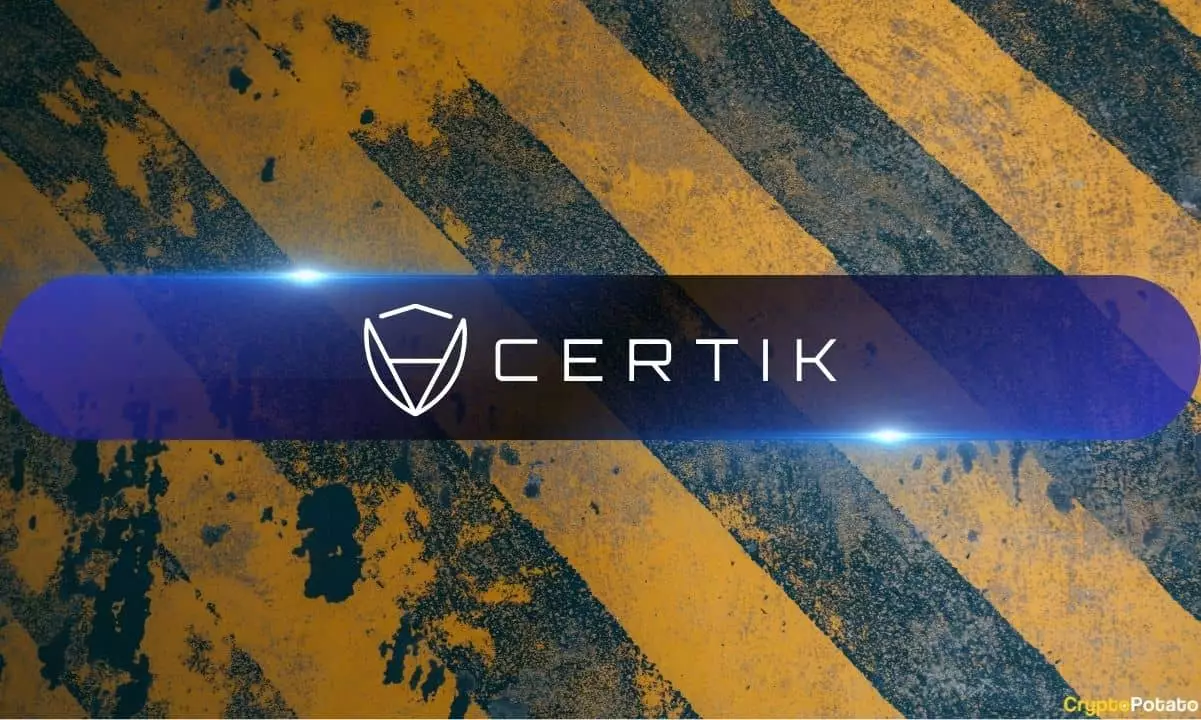In today’s digital landscape, scams and exploitations have become all too common. Even companies that specialize in security, such as CertiK, are not immune to these threats. CertiK, a renowned security firm focused on blockchain, smart contract, and Web3 security, is facing a myriad of challenges beyond its core focus of auditing. Scammers have specifically targeted the CertiK brand, using it to spread misinformation and defraud unsuspecting users.
One prevalent scam that CertiK has uncovered involves phishing sites falsely claiming to have undergone CertiK audits. These fraudulent certifications are used to deceive users into investing in schemes like Wixpool, a crypto-mining site known for its fraudulent activities. To protect users from financial losses, CertiK actively reports such sites to hosting providers for takedown.
Exit Scams and Misleading Audit Claims
Scammers have gone as far as falsely claiming to be audited by CertiK to carry out exit scams. The Lymex scam is a notable example of this, resulting in significant financial losses of approximately $300,000. In response, CertiK highlights the importance of verifying audit claims before making any investment decisions. In the case of Lymex, the failure of KYC verification revealed that no auditing services were actually rendered.
The rise of social media platforms has provided scammers with a convenient platform to create fake profiles impersonating CertiK employees. Platforms like LinkedIn have witnessed scammers brokering fake deals, presenting fraudulent investment opportunities, and even offering fake job positions. CertiK cautions users to exercise caution and verify the legitimacy of any interactions. They recount an incident where a scammer on Telegram duped a project owner into transferring funds, highlighting the very real risks involved.
Bad actors often target victims of investment fraud with recovery scams, promising to retrieve lost funds for a fee. CertiK advises users to be skeptical of such offers and stresses that their genuine communication occurs exclusively through certik.com. While the recovery service is not guaranteed, CertiK engages with relevant parties to potentially retrieve lost assets.
The rampant spread of misinformation and bot activity on Twitter has been a major concern for several years. Even after a rebranding to ‘X’ by CertiK, the scam bot activity persisted. The rebranding did little to curb the scammer’s efforts, and they continue to exploit the CertiK brand. Instances of brand misuse on ‘X’ have varied, from harmless inquiries to outright scams.
Final Thoughts
As the threat of scams continues to escalate, companies like CertiK face an ongoing battle to protect their brand and users. Scammers are evolving their tactics, and it is crucial for individuals and organizations to remain vigilant. CertiK’s relentless efforts to combat scams and protect users serve as a reminder of the importance of security in the digital age. Users must verify the legitimacy of claims, exercise caution on social media platforms, and be wary of recovery scams. By staying informed and proactive, we can collectively combat the rising tide of scammers exploiting reputable brands like CertiK.

